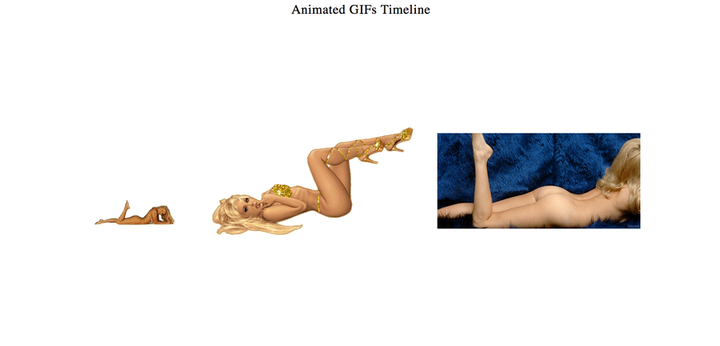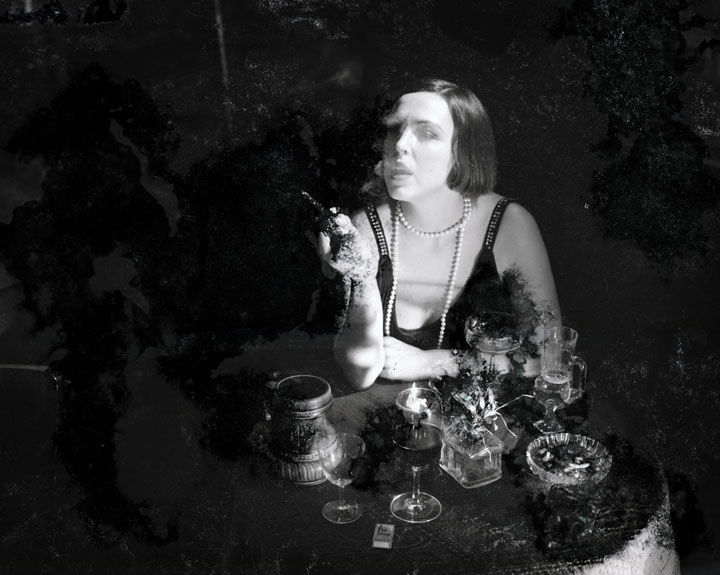Issue 4/2012 - Net section
Media on media
On the topicality of Jay David Bolter and Richard Grusin’s theses
In 2000 Jay David Bolter and Richard Grusin published one of the key works on the topic of the new media, »Remediation«. The book’s tagline, »Understanding New Media«, makes clear that this result reflected their ambitions for the publication. CDs had replaced records. DVDs had appeared on the scene; the days of the VHS video tape were numbered. Digital cameras were conquering the market. Bolter and Grusin’s terminology cannot be translated into German without some explanation, for they play with the term »media« in a way that does not work in translation. According to their observations, all new media promise »immediacy«; in other words, in contrast to old media, they promise direct transmission of media contents, without crackling, white noise or flickering images, total immersion without the bothersome limitations of the medium. It was the age of virtual reality, addressed in films such as »13th Floor«, »eXistenZ« or »Matrix«. Bolter and Grusin noted that this equation did not add up, explaining that instead each new medium absorbs, reproduces, depicts or comments on the forms and formats of the old medium. This finding can be transposed without any difficulty to older periods of media history too: for example, when photography began to replace painting as a realistic, representational medium, it initially adopted the conventions of painting before developing its own aesthetic, whilst, conversely, painting was also affected by this development, as its materiality – paint and canvas – now took centre-stage vis-à-vis photography and the representational function. The term »remediation« plays with these processes: the transposition from one medium to another, overwriting, re-formatting, feedback and interactions, as well as the depiction of one medium in another.
Twelve years on, the media world has undergone considerable developments. The three-year project »Remediate!« from the Merz-Akademie and the Akademie Schloss Solitude in Stuttgart addresses the question of whether the theory developed by Bolter and Grusin is well-suited to describing this development. »Everyone involved was preoccupied with the question«, writes Gabriele Röthemeyer, Managing Director of Medien- und Filmgesellschaft Baden-Württemberg, »of the extent to which the transformation of the existing film and television culture into Internet culture determines new forms of the public sphere, the type of response this produces and what kind of changes in the public sphere this change will bring about«. At a symposium in June 2012 to mark the end of the project, those involved took stock of how it had unfolded.
Reynold Reynolds’ multi-part artwork »The Lost« almost unintentionally demonstrates the new forms of the public sphere generated by the old media of film and television. Reynolds claims to have found film footage from the 1930s in Siberia. The gestures of his actors are however coloured by current television formats, and the depiction of naked women and sexual acts may be in keeping with today’s standards, but would not have been possible in the 1930s. It is the medium of film per se that gradually pushed out the boundaries and allowed subject-matter to be shown which, in real terms, continues to be as taboo as ever in public.
Taking some older net art projects of her own by way of example, Olia Lialina demonstrated how the Internet fosters not only limitless availability but, paradoxically, rapid forgetting too, for example when older media formats vanish. Michel Vust emphasised that, despite all the protestations of interdisciplinarity, associated disciplines such as contemporary art and film tend as a general rule to be interested in maintaining the boundaries between them, for each discipline has its own specific discourse and funding structures. New decentralised distribution routes via the Internet and DVD, as studies by Christoph Dreher and his students have shown, have allowed auteur series such as »OZ«, »The Sopranos«, »Breaking Bad« or »The Wire« to come into being on, of all places, American TV – work that can only really be compared with independent productions or European films. Isabelle Arvers reported on Machinima workshops in which she teaches young people from French suburbs how to lift figures from computer games out of their prefabricated environments in order to tell their own stories with these figures: a kind of self-empowerment or, as Arvers says, a return to scriptwriting. Through the examples of the museum and the archive in Brussels, Jo de Witte explains the possibilities and limitations of using the new media, which have not yet made any great inroads in the context she addresses. These new media could facilitate access and help protect valuable documents. Digitalisation however makes very clear that nothing can replace the original source in all its materiality.
In contrast, in the virtual world of digital archives and the World Wide Web, it is nearly impossible to draw a clear dividing line between reality and fiction, as the project »Stuttgart 12« by Peter Ott’s class makes clear. The figures used to refer to the controversial station project have been inverted, revealing that the work involves manipulations of the state of affairs around Stuttgart’s Central Station. The students produced a virtual topography based on Google Maps with numerous short filmic episodes. One of the first clips depicts a fictitious scene with a young woman who is caught shoplifting. However, users’ reactions indicate that they are convinced it is actually a documentation of a real scene. In the case of figures such as the ex-dealer Osman, the woman working to protect the park, Günther, the paranoid police officer, or Heinz, the homeless man, it is not always immediately clear which characters come from the real world and which are from the realm of fiction.
In the process, it becomes clear that seemingly unambiguous notions such as truth or reality become diversified and divided when they are no longer controlled by the central powers of public television or the economic interests of private-sector broadcasters. Creating your own realities, your own fictions can be a powerful weapon to shatter homogenising discourse or initiate changes. Although the borderlines may be deliberately blurred in this case, there is always a pinch of fiction in reality too, and a touch of reality in fiction. In the virtual world of the Net, which is ultimately a conceptual world, reality loses its claim to be generally valid and incontrovertible.
However, it also becomes apparent here that the term »remediation« can no longer be used to draw such sharp distinctions when referring to the current state of affairs: there is only limited scope to refer to old and new media, as opposed to earlier analogue media, when all media are translated into digital codes and connected in the worldwide web to form a universal media landscape. Nowadays, to be precise, there is actually just one single medium with various user interfaces and end products, which can only be described as being new in terms of their technical characteristics, if at all. But who is interested anyway in whether the storage medium is called a CD-ROM, DVD or a USB stick? That is a practical question that contributes little to a theory of the new media. Are social networks new media or merely new channels or connections within the one, sole medium of the Internet? It is no longer possible to operate effectively here with the notion of the medium. It even threatens to become the blind spot in the debate, as Friedrich Kittler already noted back in 2002 at a Solitude Akademie symposium, which was also attended by Jay David Bolter and was one of the first triggers for the »Remediate!« project.
www.merz-akademie.de/remediate/
Translated by Helen Ferguson

